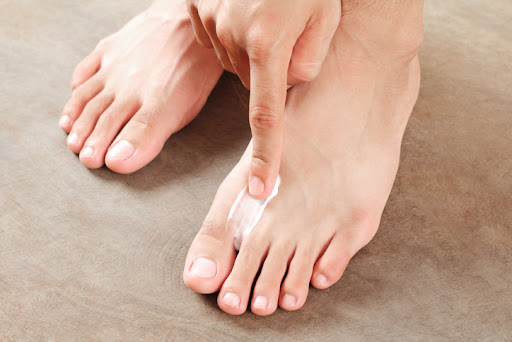ATHLETE’S FOOT

Athlete’s Foot is a fungal infection caused by dermatophytes, a parasite that lives on the skin and feeds on dead skin cells. All of us have dermatophytes, which are generally harmless; however, because dermatophytes love warm, moist places, you can break out with Athlete’s Foot if you commonly wear tight-fitting shoes that create excessive moisture between your toes. The dermatophytes also thrive when you wear damp socks, don’t dry your feet properly, and/or use towels or shoes of someone infected with athlete’s foot. While it is common knowledge that Athlete’s Foot can be spread by walking on common floors, such as the showers at the club, it can also be spread from the carpeting in hotel rooms. Even luxury hotels can harbor athletes’ foot in the carpeting. It’s recommended to be cautious when walking barefoot in public areas to stave off Athlete’s Foot.


